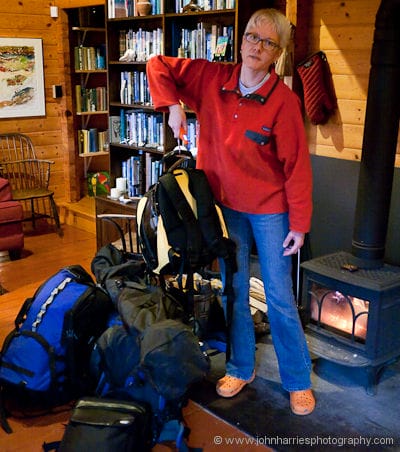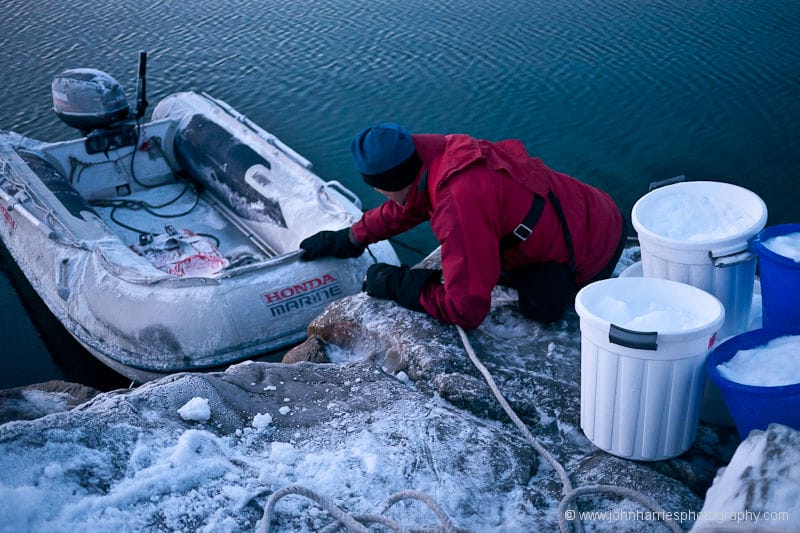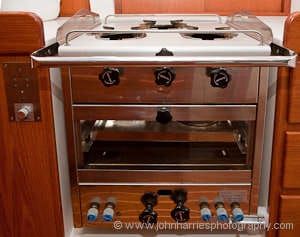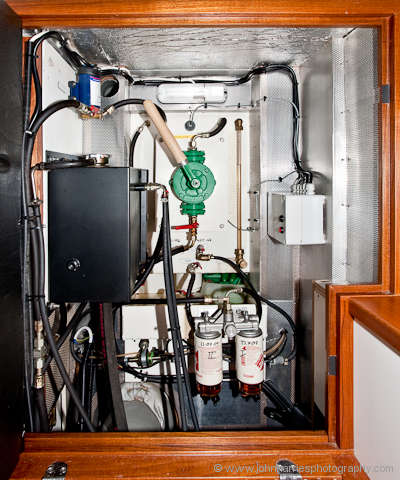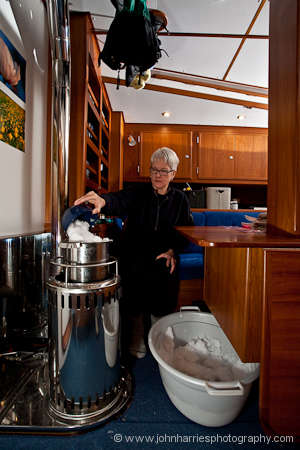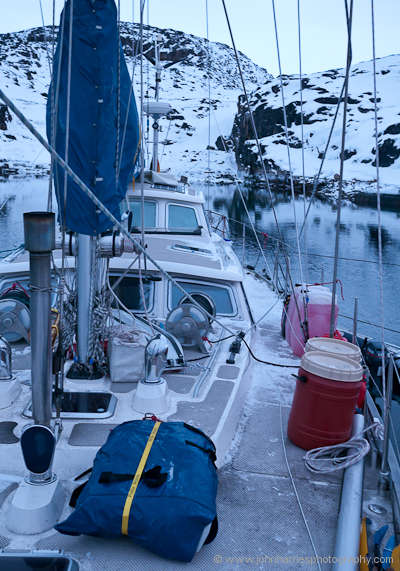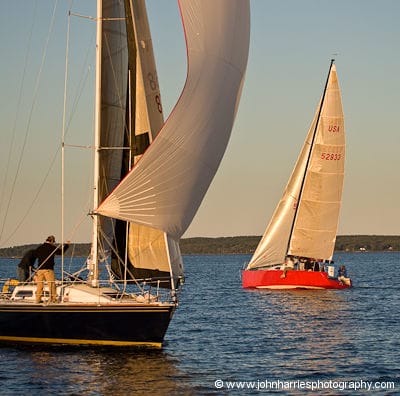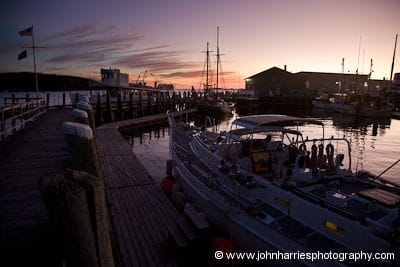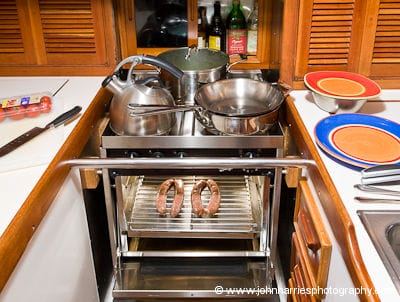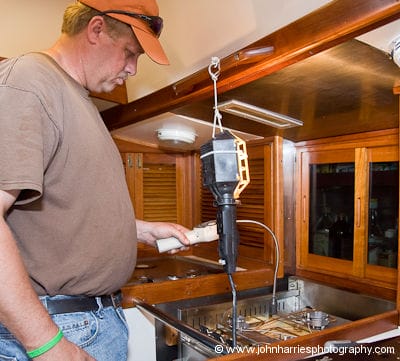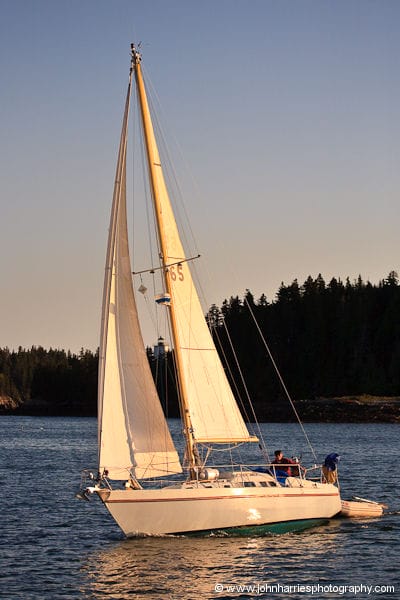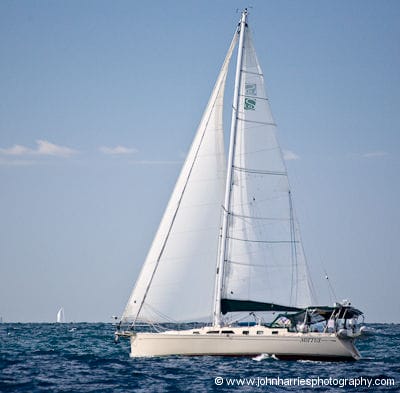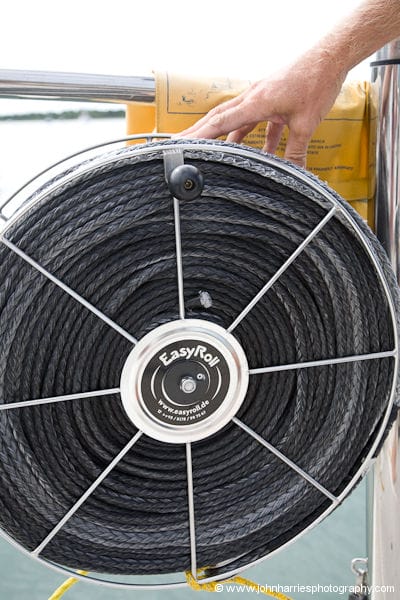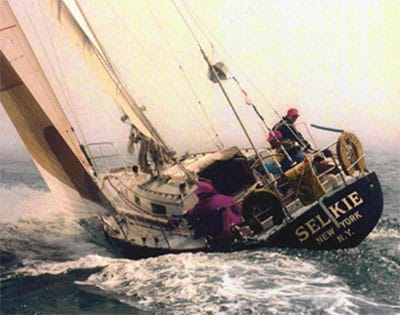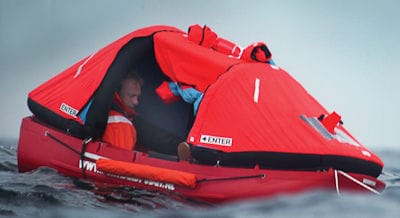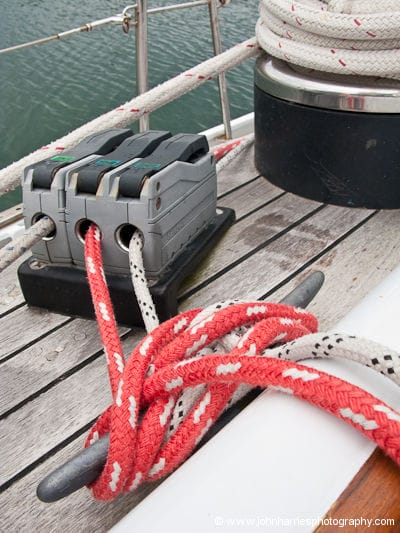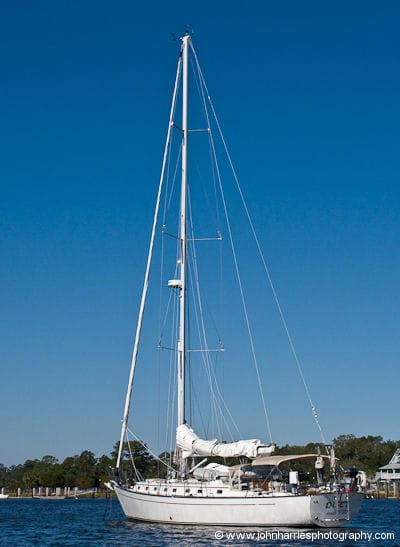-
Of Cockpits, Wheelhouses And Engine Rooms
15 CommentsReading Time: 3 minutesFreeRead more: Of Cockpits, Wheelhouses And Engine RoomsContinuing the theme of making the right decisions when selecting a voyaging boat, this chapter tackles the thorny question of engine space, cockpit space, and a covered area to operate the boat from. Can you have it all? Read on to find out.
-
Running Away With Home
0 CommentsReading Time: < 1 minuteFreeRead more: Running Away With HomePhyllis and I recently prepared for and executed a two-month trip that included 11 flights and a month on a sailboat wintering over in Greenland. Since we were traveling on some small aircraft, all of our combined checked baggage had to total less than 40kg, together with two small 8kg carry-on bags. Included in this […]
-
Safety By Reason, Not Rote
1 CommentReading Time: 3 minutesFreeRead more: Safety By Reason, Not RoteWe spent a month taking care of Polaris, a sailboat wintering over on the west coast of Greenland. Before he left for home, Michael (owner of Polaris), Phyllis and I talked about managing risk, particularly as it related to falling overboard into the sub-freezing sea water there.
-
Kerosene (Paraffin) Cooker
19 CommentsReading Time: 2 minutesFreeRead more: Kerosene (Paraffin) CookerBack in the day, many offshore voyaging pioneers like the Pyes, Smeatons, and Hiscocks cooked on Primus stoves: Peculiar machines that relied on hand pumped air pressure to force kerosene (paraffin) into a burner that was preheated with metholated spirit (industrial alcohol). Tales abounded of flare-ups, singed eyebrows and sea-cooks totally traumatized by the unpredictable […]
-
Diesel Fuel Day Tank
9 CommentsReading Time: 3 minutesFreeRead more: Diesel Fuel Day TankPolaris, the sailboat we looked after for a month in Greenland, is fitted with a diesel day tank that’s installed so the bottom of the tank is higher than the intake on the main engine and Refleks heater. (The Webasto heaters require a combined metering and lift pump, so their position, relative to the tank, […]
-
An Analysis Of Boat Heating Systems
63 CommentsReading Time: 4 minutesFreeRead more: An Analysis Of Boat Heating SystemsWe have long heard the praises of the Danish Refleks diesel drip heater sung by the many expedition sailboat owners that have them, but since we simply don’t have a good place for one, or its chimney, on Morgan’s Cloud, we had never had the chance to use one before the month we spent on […]
-
Q&A: Which Heater Is More Efficient?
24 CommentsReading Time: < 1 minuteFreeRead more: Q&A: Which Heater Is More Efficient?Question: Could you please address the fuel consumption of forced-air bus heaters vs. the Refleks?
-
S/V “Polaris”, Built For The Arctic
7 CommentsReading Time: 2 minutesFreeRead more: S/V “Polaris”, Built For The ArcticThose of you who have read some accounts of boats wintering over in the polar regions may have visions of dented hull plates, narrow escapes and three inches of frost on the INSIDE of the boat. That is not the Polaris way.
-
Q&A: Limited Production Run Of Aluminum Expedition Sailboats
4 CommentsReading Time: 2 minutesFreeRead more: Q&A: Limited Production Run Of Aluminum Expedition SailboatsQuestion: I have this notion of building a modern expedition (aluminum) fast cruiser that would include many of your ideas/opinions, not necessarily because they are your opinions but because you and I have reached many of the same conclusions. In considering a project, the thought has become, not to build ONE, but to build a […]
-
How We Buy Sails
18 CommentsReading Time: 4 minutesFreeRead more: How We Buy SailsWhy do we give so much thought to our sails? Well, first, as we talked about in this post, good sails equal good speed and good speed equals more fun. Speed also contributes to safety because you are vulnerable to bad weather for less time. Finally, if your sails are slow in normal weather, they […]
-
Laying-Up, A Break From Vigilence
0 CommentsReading Time: 2 minutesFreeRead more: Laying-Up, A Break From VigilencePhyllis and I just finished laying-up Morgan’s Cloud for the winter at Billings Diesel and Marine in Maine, where we will be replacing the engine. As always, we are sad to move off the boat, which, over the last 18 years, has become more our home than any place else.
-
Force10 Stove (Cooker) Review
8 CommentsReading Time: 3 minutesFreeRead more: Force10 Stove (Cooker) ReviewOur Force 10 stove just had serious defects, but now we have those fixed, here’s a review.
-
Force10 Stove (Cooker), Problems, Take Two
7 CommentsReading Time: 4 minutesFreeRead more: Force10 Stove (Cooker), Problems, Take TwoDuring our recent refit we replaced Morgan’s Cloud ’s old cooker with a three burner model from Force10. Getting the new stove working properly and safely has not been easy.
-
Don’t Forget About The Sails
8 CommentsReading Time: 2 minutesMembersRead more: Don’t Forget About The SailsThese days, with all the focus on the latest whiz-bang gadgets, many sailors are forgetting to think about and spend money on their boat’s primary means of locomotion. In this post we look at why spending time and money on good sails is vital. Not only is a boat that sails well more fun, it’s also a lot safer.
-
Boats We Like: The Saga 43
14 CommentsReading Time: 2 minutesFreeRead more: Boats We Like: The Saga 43We have come across a couple of Saga 43s in the last two years. I can’t say we have made a close evaluation, but they do seem like nice boats with good and moderate lines, that avoid the problems caused by excessive beam, particularly aft. The designer, Bob Perry, has a history of wholesome offshore […]
-
Managing Ocean Currents
20 CommentsReading Time: 4 minutesMembersRead more: Managing Ocean CurrentsI have written a lot about weather up to this point in the book, but in many cases routing for the combination of the prevailing weather and any current or tide can be the most important contributor to a comfortable and safe passage. In this chapter I look at a real Gulfstream passage and discuss what to look for.
-
Shorefasts And Line Reels on “Polaris”
16 CommentsReading Time: 3 minutesFreeRead more: Shorefasts And Line Reels on “Polaris”A few months ago we published a photo essay about Polaris, the custom Hutting 54 especially designed and built for cruising remote places, owned by our friends Michael and Martina. Since then several people have asked about the line reels shown in the photographs. I passed these questions on to Michael and got the following […]
-
Designers of “Morgan’s Cloud” Have A New Website
0 CommentsReading Time: 2 minutesFreeRead more: Designers of “Morgan’s Cloud” Have A New WebsiteMcCurdy and Rhodes, designers of Morgan’s Cloud, have a new and very classy web site. The firm is now run by Ian McCurdy, whose father, Jim, was a founding partner and designed our boat.
-
Q&A: Portland Pudgy Tender And Liferaft Combo
14 CommentsReading Time: 9 minutesFreeRead more: Q&A: Portland Pudgy Tender And Liferaft ComboQuestion: What are your views on the Portland Pudgy as a “proactive” life raft?
-
Q&A: Trans-Ocean Navigation
8 CommentsReading Time: 2 minutesFreeRead more: Q&A: Trans-Ocean NavigationQuestion: We are crossing the Atlantic from the Canary Islands to St. Lucia. I found a large scale chart of the Atlantic (Imray Passage Chart 100). This single chart shows the entire Atlantic Ocean taking the earth’s curvature into account and therefore does NOT have a compass rose to help steer by. I am having […]
-
Gale And Storm At Anchor Or On A Mooring Check List
13 CommentsReading Time: 3 minutesMembersRead more: Gale And Storm At Anchor Or On A Mooring Check ListJohn shares the checklist he uses to prepare for a gale or storm when at anchor or on a mooring.
-
Q&A: Interior Layout And Boat Selection
0 CommentsReading Time: 2 minutesFreeRead more: Q&A: Interior Layout And Boat SelectionQuestion: I am looking at a cross-Atlantic trip and was thinking about a 1978 A Plan Endeavour 37, mainly because of the layout. Would you advise against this boat for such a long journey even with a good survey?
-
Yet More On Series Drogue Retrieval
8 CommentsReading Time: 3 minutesFreeRead more: Yet More On Series Drogue RetrievalWe just received this e-mail from Evans Starzinger who, together with his partner, Beth Leonard, completed two circumnavigations. The second one was west to east and south of the great capes, on their Samoa 47 Hawk.
-
Swept-Back Spreaders—We Just Don’t Get It!
3 CommentsReading Time: 2 minutesMembersRead more: Swept-Back Spreaders—We Just Don’t Get It!John doesn’t understand the move to swept back spreaders in sailboat rig design. And he’s not shy about saying so.
-
Antiseasickness Product Hurl-off, Our Drug Of Choice
10 CommentsReading Time: 2 minutesFreeRead more: Antiseasickness Product Hurl-off, Our Drug Of ChoiceWhy we choose Gravol to fight seasickness on Morgan’s Cloud.

